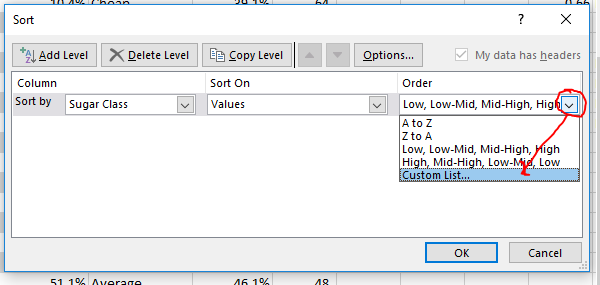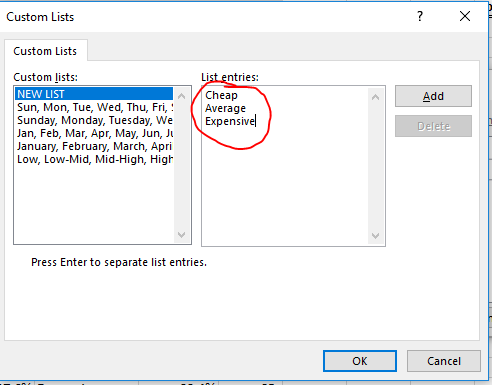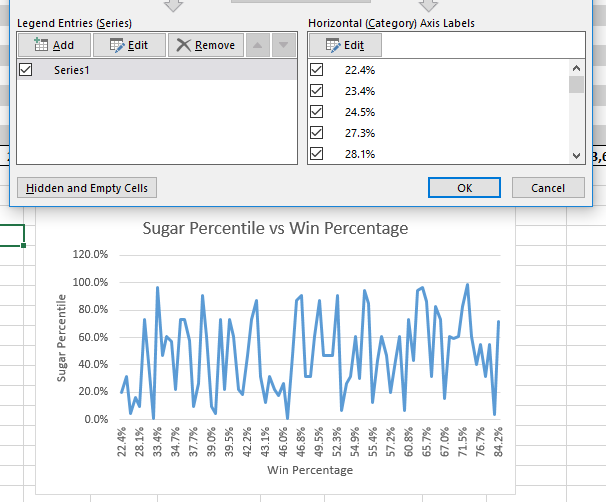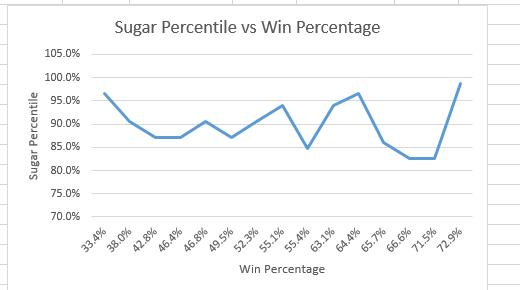Tables
- This is (mostly) from chapter 5.
- I am starting with the worksheet from the last set of notes.
- Or you may start with yours.
- Start by making a copy of the Data worksheet
- Call it Data as Table
- Add it to the about sheet
- Tables in excel
- This is a simple database like tool.
- It facilitates sorting and filtering.
- We will use these quite a bit.
- Building a table
- As long as the data is contiguous
- Select any cell in the table
- Insert->Tables -> Table
-

- If it is not contiguous, make it so.
- But you can also give a range
- On the context dependent tab,
- You can name/rename the table
-

- On page 111 he gives a list of benefits of a table.
- We will want tables for pivot tables later.
- They give us a quick way to explore the data.
- You can apply different styles to a table,
- Or build your own, but I don't care about that type of task.
- Inserting into tables is somewhat easier.
- Go to column K, and insert a column to the left.
- Call this column Attribute Count
- in K2 put =sum(b2:j2)
- Notice that excel copies this down for you.
-

- Play with filtering and sorting.
- Let's add a win rank column at the end.
- I can never remember this function.
- Let's use the formula editor
- click in p2
- Select the formula editor from the command bar
-

- Search for rank
- This gives us three reasonable choices.
- Rank, which they tell us is for compatibility
- rank.eq : the top rank is used for equally ranked values
- rank.avg: the average rank is used for equally ranked values.
- Select rank.eq
- Notice the dialog box gives us information on the command
- and there is a Help on this function in the lower left.
- Select
- Number: o2
- Ref: win
- Order : blank or 0
- Reformat the column as integers.
- I would like to do something with the cost
- Let's add a label column
- I want to break it into three categories, Cheap, Average, Expensive
- Build a lookup table off to the side
-

- Add a column after the price percentile column.
- Do a vlookup on your new table.
- =vlookup(
- M2
- $U$5:$V$7
- 2
- this is a range lookup, so the fourth parameter is not needed.
-

- Can you do the same for Sugar Percentile but have four classes, low, Low, Low-Mid, Mid-High, High?
- By the way, we can custom sort on these fields
- Select the drop down menu in Price Class
-

- Under order, select the dropdown and select custom List
-

- Type in the list under List entries
-

- Now sort using this new list.
- A nice feature is the Total Row
- Table Tools Design tab, Table Style Options, Total Row
-

- Select Sum for columns b,c,d,e
- Filter B for only values of 1
- Filter D for only values of 1.
- Notice the totals update to the filtered values.
- When filtering, excel hides rows
- You don't want to work to the right of a table you are filtering.
- Otherwise, your results will be hidden at times.
- But you can copy and paste filtered data
- And it will only copy the non-hidden rows.
- If you produce a chart based on the data in the table,
- As you filter and sort the data, the chart will change.
- Build a line graph of Sugar Percentile.
- Use Win percentage as the horizontal category
-

- Put this below the table.
- Filtering for only High sugar will change the graph
-

- Move the graph to a new worksheet.
- Create slicers.
- CandyC.xlsx











